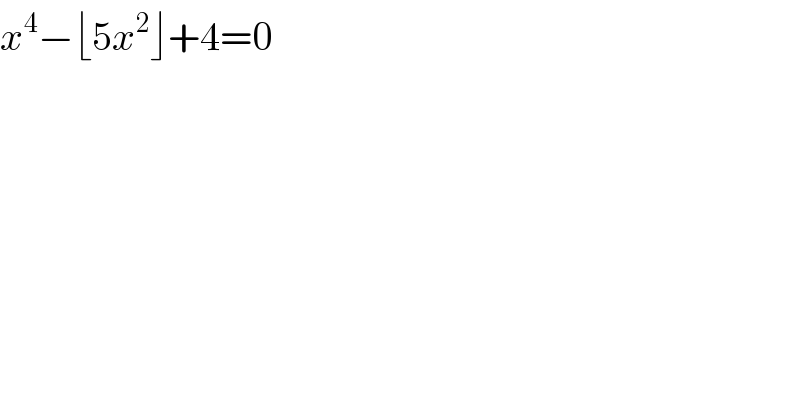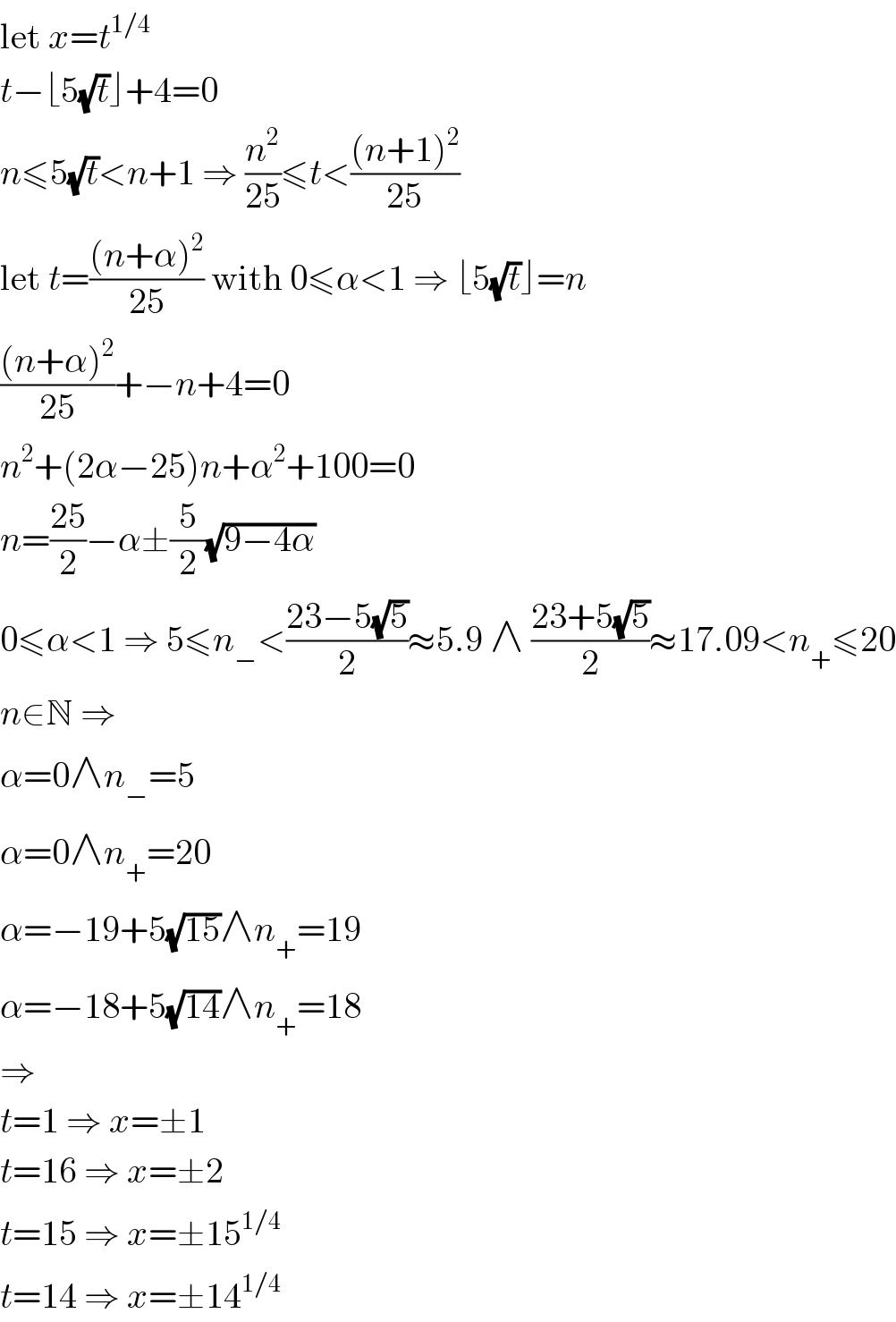
Question and Answers Forum
Question Number 117620 by Dwaipayan Shikari last updated on 12/Oct/20

Answered by mr W last updated on 12/Oct/20

Commented by floor(10²Eta[1]) last updated on 12/Oct/20

Commented by mr W last updated on 13/Oct/20

Answered by AbduraufKodiriy last updated on 12/Oct/20
![x^2 =t t^2 −⌊5t⌋+4=0 ⌊5t⌋=t^2 +4 ∈ Z {5t}=−(t^2 −5t+4) 0≤−(t^2 −5t+4)<1 ⇒ t∈[1; ((5−(√5))/2))∪(((5+(√5))/2); 4] Thus, (t^2 +4)∈[5; ((23−5(√5))/2))∪(((23+5(√5))/2); 20] approximately: (t^2 +4)∈[5; 5.9)∪(17.09; 20] So, 1) t^2 +4=5 ⇒ t=1 2) t^2 +4=18 ⇒ t=(√(14)); 3) t^2 +4=19 ⇒ t=(√(15)); 4) t^2 +4=20 ⇒ t=4 Answer: x_(1,2) =±1, x_(3,4) =±((14))^(1/4) , x_(5,6) =±((15))^(1/4) , x_(7,8) =±2](Q117623.png)
Answered by floor(10²Eta[1]) last updated on 12/Oct/20

Commented by Dwaipayan Shikari last updated on 12/Oct/20

Answered by MJS_new last updated on 12/Oct/20

Commented by MJS_new last updated on 12/Oct/20

Answered by 1549442205PVT last updated on 13/Oct/20
![x^4 −⌊5x^2 ⌋+4=0(1).Put x^4 +4=t(t≥4) ⇒x^2 =(√(t−4)).Then(1)⇔[5(√(t−4))]=t(∗) By the definition of function [x]we have 0≤5(√(t−4))−t<1 ⇔ { ((5(√(t−4))≥t(1))),((5(√(t−4))<t+1(2))) :}(∗∗) (1)⇔25(t−4)≥t^2 ⇔t^2 −25t+100≤0 ⇔(t−5)(t−20)≤0⇔5≤t≤20.Since t≥4,so by(∗)⇒t∈N⇒t∈{5,6,...,20}(3) (2)⇔25(t−4)<t^2 +2t+1 ⇔t^2 −23t+101>0⇔ t∈(−∞,((23−5(√5))/2))∪(((23+5(√5))/2),+∞) 5.9≈((23−5(√5))/2) and ((23+5(√5))/2)≈17.09 ⇒t∈{4,5}∪{18,19,20,21,...}(4) Combining (3)(4)we get t∈{5,18,19,20}are roots of the system of the inequalities (∗∗) i)t=5⇔x^4 +4=5⇔x^4 =1⇔x=±1 ii)t=18⇒x^4 +4=18⇔x=±^4 (√(14)) iii)t=19⇒x^4 +4=19⇔x=±^4 (√(15)) iv)t=20⇒x^4 +4=20⇔x=±2 Thus,roots of the system (∗∗) are x∈{±1;±2,±^4 (√(14)), ±^4 (√(15))}that is answer of our problem.](Q117642.png)
Commented by floor(10²Eta[1]) last updated on 13/Oct/20

Commented by 1549442205PVT last updated on 13/Oct/20

